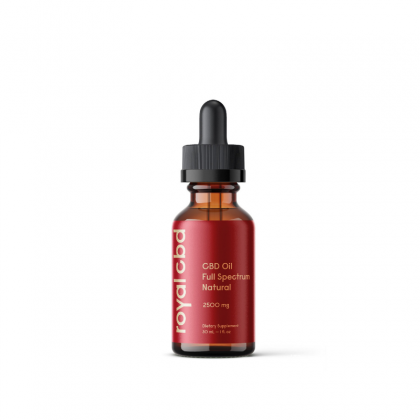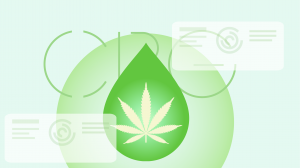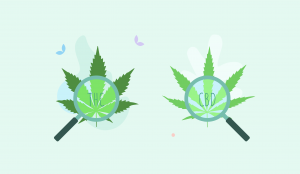| Total CBD: | 500 – 2500 mg |
| Potency: | 16.6 - 83.3 mg/mL |
| Cost per mg CBD: | $0.12 – $0.18 |
| Extract Type: | Full-spectrum |
| THC Content: | <0.3% |

Evidence based
CBD For Liver Disease (NAFLD & AFLD): What the Research Says
Studies have shown that people who regularly use cannabis have fewer incidences of fatty liver disease.
How does this work?
Can CBD oil support people with liver disease?
Fatty liver disease is a serious, but common medical condition.
Some studies have shown it to be present in about 16% of the population [1].
It’s a problem that tends to get worse until, eventually, it results in liver failure.
There are currently no known cures for the disease, however, recent evidence has suggested that CBD can be extremely beneficial for the condition.
Here, we investigate these claims, how they may work, and how CBD oil can be used to support fatty liver disease.
The Benefits of CBD Oil For Fatty Liver Disease
CBD oil has indirect benefits for fatty liver disease. Research has shown CBD protects the liver by preventing overreaction of the endocannabinoid system (ECS). When the liver becomes stressed (due to poor diet or exposure to toxic compounds), the endocannabinoid system becomes highly active in the liver.
It’s this activation of the ECS leads to a buildup of fatty acid particles in the liver. CBD may prevent this from happening and may help slow the progression of the disease.
The only way to effectively treat fatty liver disease is through diet and lifestyle modifications. CBD oil can help support the condition, but won’t offer a cure.
Guide to Using CBD Oil For Fatty Liver Disease
In recent years, there’s been a lot of reports that marijuana users suffered less frequently from obesity, diabetes, and metabolic syndrome [3-5], all of which are key drivers of fatty liver disease.
This is even more interesting when these researchers began looking at the diets of cannabis users and non-users.
On average, cannabis users ate more junk foods, soda, and alcohol than non-users [6], yet still had lower incidences of metabolic disease.
So this had researchers wondering;
“Could marijuana and CBD oil be used to prevent or treat fatty liver disease?”
A large research study analyzed the effects of CBD on 22,366 patients, many of which had active fatty liver disease or earlier stages of metabolic syndrome. Researchers in this study confirmed that the chances of developing fatty liver disease were much lower in those who were active cannabis users, though they were unable to suggest a mechanism for these effects [7].
Other studies have since been published that shed some light on how this works.
In order to get into the details of how this works, let’s discuss the role of the endocannabinoid system in the liver, and how this plays an important role in fatty liver disease.
What’s The Dose of CBD Oil For Fatty Liver Disease?
Dosing CBD for fatty liver disease is very similar to dosing it for other conditions.
Because the cannabinoids affect everybody so differently, it’s recommended that you always start with a lower dose (around 1 mg per day) and increase gradually from there.
Some people will stay at this 1 mg dose, while others may need substantially more, perhaps around the 30 mg mark,
The best way to find out the dose for you is to take 1 mg, then increase by 4 mg each day.
If side effects are noted (such as drowsiness, nausea, or poor appetite) simply reduce the dose to the last one that produced no side effects and stay there.
Fatty liver disease is a long-term, chronic condition, and will, therefore, need to be taken over a long period of time.
We recommend taking a high-quality CBD oil for 6 or 12 months, with regular follow-ups with your doctor to see any progression.
CBD Oil Dosage Calculator
What is Fatty Liver Disease?
Fatty liver disease is exactly what it sounds like: fat deposits in the liver.
When this happens, the fat deposits will start to interfere with the liver’s ability to function. If left unchecked, it will eventually lead to much more serious health problems.
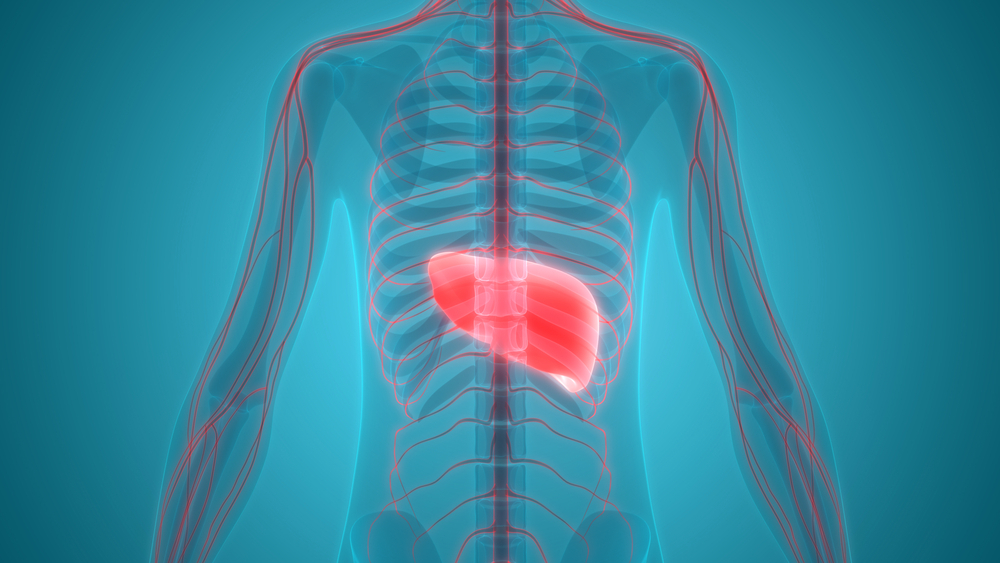
There are two types of fatty liver disease:
1. Non Alcoholic Fatty Liver Disease (NAFLD)
Non-alcoholic fatty liver disease is caused by metabolic dysfunctions in the body.
Our liver plays a major role in the regulation of both sugar and fat metabolism.
The liver teams up with the pancreas and adrenal glands to control our blood sugar levels and fat burning or storage.
When we eat too much sugar or refined carbohydrates like chips, white bread, or candy, and don’t exercise enough, our body stops listening to one of the hormones secreted by the pancreas — insulin.
This is the starting point for fatty liver disease.
As soon as insulin stops working, the body no longer uses sugar the way it’s supposed to, causing it to build up to dangerous levels in the blood.
The liver needs to work much harder to stop the build-up of sugar from causing damage to the body. It does this by converting the sugar into stored fat.
When this happens, fat droplets accumulate inside the liver cells themselves.
Over time, these fat droplets will grow and take up more and more space inside the liver.
This causes damage to the liver cells, making them less effective at doing the job they’re meant to do. As the liver cells die, they trigger inflammation in the area, causing the liver to swell and become even less effective.
With long-term inflammation, the liver will begin to fill up with scar tissue, known as fibrosis.
These scars cause permanent changes to the liver, making it ineffective, and eventually leading to more serious symptoms.
NAFLD is driven by poor diet and lack of exercise.
2. Alcoholic Fatty Liver Disease (AFLD)
Alcoholic fatty liver is caused by long-term alcoholism.
The body can generally tolerate small amounts of alcohol relatively well, however, large amounts are problematic to the body.
There are 3 different ways the liver can metabolize alcohol, the main one being a pathway called alcohol dehydrogenase. There are many steps to this process, but the most important thing to know is that it requires a lot of energy to function.
This energy comes in the form of something called NAD+.
NAD+ can be thought of as a cellular currency for energy.
In order for the liver to get access to enough NAD+ to fuel alcohol metabolism, it needs to build a lot of fat. This is because NAD+ is a byproduct of building fat.
This leads to a buildup of fatty acids in the liver.
Over long periods of time, this fat can build-up to the point where it starts to get in the way, no matter where the liver tries to put it. There is simply too much.
By the time fatty liver disease symptoms show up in an alcoholic, there’s already a great deal of damage done, and it’s very difficult to repair, even with CBD oil.
CBD oil is best used for people with non-alcoholic fatty liver disease, so this is going to be the main focus of this article.

Diet & Lifestyle Modifications
As you can see, both alcoholic and non-alcoholic fatty liver disease is caused primarily by lifestyle and diet factors.
Diets with too much sugar or refined carbohydrates, poor exercise, and excessive alcohol intake are all key drivers in the condition.
Therefore, anything you take to help the condition is going to come secondary to changing the causes. This means visiting a holistic nutritionist, or dietitian, and working on changing your habits around food and alcohol.
CBD oil can go a long way if used in combination with these changes but will do very little on its own.
The Endocannabinoid System & Fatty Liver Disease
The endocannabinoid system is found in all mammals.
It’s a system of receptors (CB1 and CB2 receptors) and endogenous cannabinoids that are responsible for regulating many of our homeostatic control mechanisms.
In simple English, this means that the endocannabinoid system controls the balance of various systems in the body.
When our organs become damaged, inflamed, or dysfunctional, we find a noticeable increase in the endocannabinoid activity in the area, as it tries to bring us back to normal levels.
In a healthy liver, the endocannabinoid system only has a modest presence. In fact, it doesn’t appear to do much at all in this particular organ.
However, when the liver becomes damaged and inflamed, the endocannabinoid system wakes up and starts to be very active in the area.
Too active, perhaps…
Let me explain.
When fatty liver starts and the liver function begins to suffer, the endocannabinoid system steps up to try and make things normal again, unfortunately, it only appears to make things worse, and CB1 and CB2 endocannabinoid receptors play a role in the development of fatty liver disease [8].
Supporting Liver Function With CBD
This is going to get real confusing, so let me get this out of the way.
CBD is a CB1 and CB2 receptor agonist-antagonist.
What does this mean, you ask?
In this case, it means that CBD stops the compounds that are making the endocannabinoid receptors (CB1 and CB2) in the liver go haywire.
It stops the endocannabinoid system from going crazy, establishing balance to the endocannabinoid system itself.
It’s the equalizer for the system that balances us.
This effectively protects the body from things like fatty liver disease and makes it easier for us to resist and recover from this condition more effectively.
It’s important to note that this action alone isn’t going to prevent fatty liver disease, but will make it more difficult for the condition to occur, giving us more time to change our lifestyle habits and diet before any permanent consequences set in.
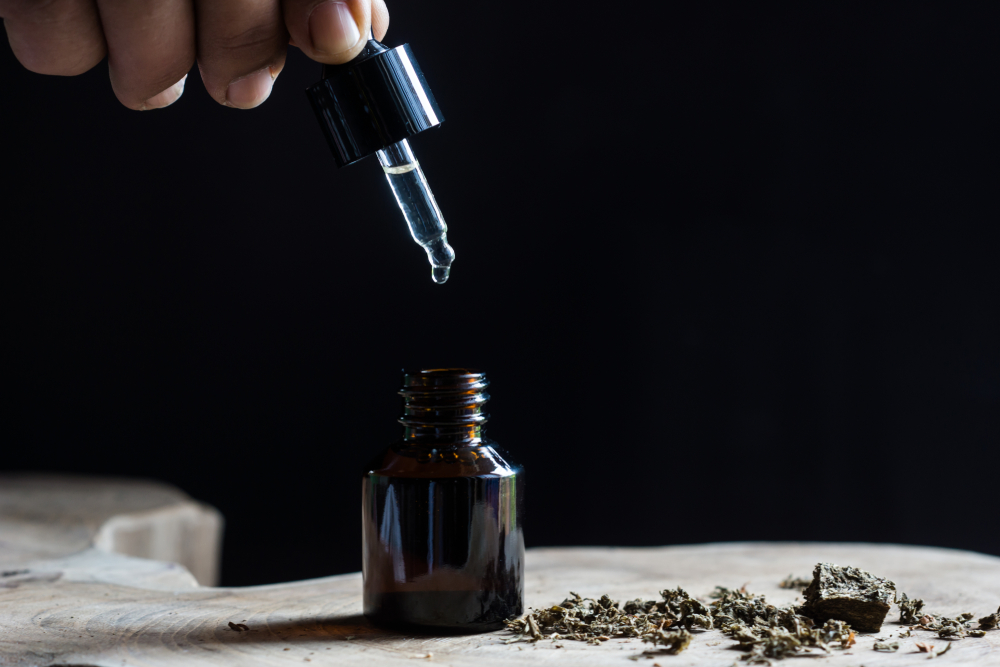
Key Takeaways: Can CBD Oil Help With Fatty Liver Disease?
The best way to prevent or treat fatty liver disease is through diet modification.
CBD and other cannabinoids are going to go a long way in slowing the progression of the disease, and may even help to reverse it, but they aren’t going to work very well if the causes are still going on.
The primary cause of fatty liver disease is poor diet and lifestyle habits.
Heavy drinking, high junk food diets, and lack of exercise are the main causes of the condition. If they aren’t removed, the problem will persist and eventually get worse.
Combining CBD oil with diet changes – like eliminating processed and refined carbohydrates -, quitting alcohol or cigarette consumption, and spending at least 30 minutes per day on a mild-moderate level of exercise are going to go a long way in addressing the actual cause for the condition.
References Cited in This Article
- Alswat, K. A. (2013). The role of endocannabinoids system in fatty liver disease and therapeutic potentials. Saudi journal of gastroenterology: official journal of the Saudi Gastroenterology Association, 19(4), 144.
- 013). The role of endocannabinoids system in fatty liver disease and therapeutic potentials. Saudi journal of gastroenterology: official journal of the Saudi Gastroenterology Association, 19(4), 144.
- Le Strat, Y., & Le Foll, B. (2011). Obesity and cannabis use: results from 2 representative national surveys. American journal of epidemiology, 174(8), 929-933.
- Rajavashisth, T. B., Shaheen, M., Norris, K. C., Pan, D., Sinha, S. K., Ortega, J., & Friedman, T. C. (2012). Decreased prevalence of diabetes in marijuana users: cross-sectional data from the National Health and Nutrition Examination Survey (NHANES) III. BMJ open, 2(1), e000494.
- Vidot, D. C., Prado, G., Hlaing, W. M., Florez, H. J., Arheart, K. L., & Messiah, S. E. (2016). Metabolic syndrome among marijuana users in the United States: an analysis of National Health and Nutrition Examination Survey data. The American journal of medicine, 129(2), 173-179.
- Smit, E., & Crespo, C. J. (2001). Dietary intake and nutritional status of US adult marijuana users: results from the Third National Health and Nutrition Examination Survey. Public health nutrition, 4(3), 781-786.
- Kim, D., Kim, W., Kwak, M. S., Chung, G. E., Yim, J. Y., & Ahmed, A. (2017). Inverse association of marijuana use with nonalcoholic fatty liver disease among adults in the United States. PloS one, 12(10), e0186702.
- Purohit, V., Rapaka, R., & Shurtleff, D. (2010). Role of cannabinoids in the development of fatty liver (steatosis). The AAPS journal, 12(2), 233-237.
More Health Conditions to Explore
-
Conditions Related to Health Benefits
- CBD For Allergies: Can This Cannabinoid Ease Symptoms?
- Top 10 CBD Oils For Back Pain
- Can CBD Help With Menstrual Cramps?
- CBD for Sciatica: How It Works, Safety, Drug Interactions, & Best Products
- Is CBD a Viable Treatment for Cerebral Palsy?
- CBD Oil For Sleep
- CBD For Psoriasis: Can CBD Help to Alleviate Symptoms?
- Traumatic Brain Injury (TBI)
- Arthritis
- Anxiety & Depression
- Weight Loss
- ADD & ADHD
- Anorexia
- Alzheimer’s Disease & Dementia
- Addiction
- ALS (Amyotrophic Lateral Sclerosis)
- Antibiotic Resistance
- Asthma
- Atherosclerosis
- Autism
- Acne
- Bipolar Disorder
- Pain
- Crohn's Disease & Ulcerative Colitis
- Diabetes
- Epilepsy
- Endocrine Disorders
- Fibromyalgia
- Fatty Liver Disease
- Glaucoma
- Hypertension
- Heart Disease
- Huntington's Disease
- Inflammation
- Irritable Bowel Syndrome (IBS)
- Kidney Disease
- Migraine Headaches
- Muscle Recovery
- Multiple Sclerosis
- Motion Sickness
- Metabolic Syndrome
- Neurodegeneration
- Cancer
- Nausea
- Neuropathic (Nerve) Pain
- Osteoporosis/Bone Health
- Obsessive-Compulsive Disorder (OCD)
- Polycystic Ovarian Syndrome (PCOS)
- PTSD
- Prion/Mad Cow Disease
- Premenstrual Syndrome (PMS)
- Parkinson’s Disease
- Schizophrenia
- Sickle Cell Anemia
- Stroke
-
Conditions Related to Products
- Ranking The Top 13 THC Gummies By Category (Δ8, Δ9, Δ10, HHC, & More)
- Top 10 CBD Oils For Back Pain
- Everything You Need to Know About CBD Sunscreen
- Top 7 CBD Gummies For Sleep & Insomnia
- Top 7 CBD Gummies To Help With Anxiety (2022)
- Best CBD Gummies For Pain (Top-Rated Pain Gummies For 2022)
- Best Hemp Cigarettes (Top 5 Nicotine-Free Smokes)
- Top 5 CBD Lip Balms For 2022
- The Top 7 CBD Face Masks for 2022
- The Best CBD Inhalers For 2022 (& How to Use Them)
- Best Full-Spectrum CBD Vape Juice: What to Look For & How to Use It
- CBD Eye Drops: New Option For Glaucoma?
- CBD Oil For Dogs With Arthritis
- Best CBD Massage Oils In 2022
- Buyer's Guide To The Best CBD Vape Kits In 2022
- CBD Chocolate: Yes, It Exists & It's Just as Divine as it Sounds
- CBD Pre-Rolls & Cigarettes
- Terpene Concentrates
- Best CBD Soaps
- Best CBD Shampoo & Conditioner
- Best CBD Juul Pods
- CBD Isolate Oils
- Full-Spectrum CBD Oils
- Best CBD Lube
- CBD Honey
- CBD Transdermal Patches
- Best Dry Herb Vaporizers
- CBD Oil For Dogs With Epilepsy
- CBD Oil For Dogs With Anxiety
- CBD Oil For Dogs With Cancer
- CBD For Horses
- CBD Chewing Gum
- CBD Pain Cream
- CBD Oil For Cats
- CBD Oil For Dogs
- CBD Hemp Flower
- CBD Suppositories
- Best CBD Gummies for Pain, Sleep & Anxiety Reviewed (2022)
- CBD Teas
- CBD Vape Pens
- CBD Vape Oils
- CBD Coffee
- CBD Drinks & Shots
- CBD Crystals
- CBD Skincare
- Best CBD Oil & Gummies For Kids: Is CBD Safe for Children with Anxiety & ADHD?
- CBD Concentrates
- CBD Bath Bombs
- CBD Capsules
- CBD Sprays
- CBD Dog Treats
-
Conditions Related to Topicals
-
Conditions Related to Oils & Tinctures
-
Conditions Related to Edibles
- Top 7 CBD Gummies To Help With Anxiety (2022)
- Best CBD Gummies For Pain (Top-Rated Pain Gummies For 2022)
- CBD Chocolate: Yes, It Exists & It's Just as Divine as it Sounds
- CBD Honey
- CBD Chewing Gum
- Best CBD Gummies for Pain, Sleep & Anxiety Reviewed (2022)
- CBD Teas
- CBD Coffee
- CBD Drinks & Shots
- CBD Capsules
-
Conditions Related to Gummies
- Ranking The Top 13 THC Gummies By Category (Δ8, Δ9, Δ10, HHC, & More)
- Top 7 CBD Gummies For Sleep & Insomnia
- Top 7 CBD Gummies To Help With Anxiety (2022)
- Best CBD Gummies For Pain (Top-Rated Pain Gummies For 2022)
- Best CBD Gummies for Pain, Sleep & Anxiety Reviewed (2022)
- Best CBD Oil & Gummies For Kids: Is CBD Safe for Children with Anxiety & ADHD?
-
Conditions Related to Hemp Flower
-
-
Conditions Related to Terpenes
-
-
Conditions Related to Cultivation
-
Conditions Related to Concentrates
-
Conditions Related to Delta 8 THC
-
Conditions Related to Delta 9 THC
-
-
-
-
Conditions Related to CBD
- Everything You Need to Know About CBD Sunscreen
- Top 7 CBD Gummies For Sleep & Insomnia
- Top 7 CBD Gummies To Help With Anxiety (2022)
- Best CBD Gummies For Pain (Top-Rated Pain Gummies For 2022)
- Best Hemp Cigarettes (Top 5 Nicotine-Free Smokes)
- Top 5 CBD Lip Balms For 2022
- The Top 7 CBD Face Masks for 2022
- The Best CBD Inhalers For 2022 (& How to Use Them)
- Best Full-Spectrum CBD Vape Juice: What to Look For & How to Use It
- CBD Eye Drops: New Option For Glaucoma?
- CBD Oil For Dogs With Arthritis
- Best CBD Massage Oils In 2022
- Buyer's Guide To The Best CBD Vape Kits In 2022
- CBD Chocolate: Yes, It Exists & It's Just as Divine as it Sounds
- CBD Pre-Rolls & Cigarettes
- Best CBD Soaps
- Best CBD Shampoo & Conditioner
- Best CBD Juul Pods
- CBD Isolate Oils
- Full-Spectrum CBD Oils
- Best CBD Lube
- CBD Honey
- CBD Transdermal Patches
- CBD Oil For Dogs With Epilepsy
- CBD Oil For Dogs With Anxiety
- CBD Oil For Dogs With Cancer
- CBD For Horses
- CBD Chewing Gum
- CBD Pain Cream
- CBD Oil For Cats
- CBD Oil For Dogs
- CBD Hemp Flower
- CBD Suppositories
- Best CBD Gummies for Pain, Sleep & Anxiety Reviewed (2022)
- CBD Teas
- CBD Vape Pens
- CBD Vape Oils
- CBD Coffee
- CBD Drinks & Shots
- CBD Crystals
- CBD Skincare
- Best CBD Oil & Gummies For Kids: Is CBD Safe for Children with Anxiety & ADHD?
- CBD Concentrates
- CBD Bath Bombs
- CBD Capsules
- CBD Sprays
- CBD Dog Treats
-
-
Conditions Related to THC-O
-
-
Conditions Related to Joint Health
-
Conditions Related to Pain Disorders
- Top 10 CBD Oils For Back Pain
- Can CBD Help With Menstrual Cramps?
- CBD for Sciatica: How It Works, Safety, Drug Interactions, & Best Products
- Traumatic Brain Injury (TBI)
- Arthritis
- Pain
- Fibromyalgia
- Glaucoma
- Inflammation
- Kidney Disease
- Migraine Headaches
- Multiple Sclerosis
- Neuropathic (Nerve) Pain
- Premenstrual Syndrome (PMS)
- Sickle Cell Anemia
-
Conditions Related to Autoimmune Disease
-
Conditions Related to Cognitive Health
-
Conditions Related to Metabolic Disorders
-
Conditions Related to Psychological Disorders
-
Conditions Related to Muscles & Bones
-
Conditions Related to Nervous System
- CBD for Sciatica: How It Works, Safety, Drug Interactions, & Best Products
- Is CBD a Viable Treatment for Cerebral Palsy?
- CBD Oil For Sleep
- Traumatic Brain Injury (TBI)
- Anxiety & Depression
- ADD & ADHD
- Anorexia
- Alzheimer’s Disease & Dementia
- Addiction
- ALS (Amyotrophic Lateral Sclerosis)
- Autism
- Bipolar Disorder
- Epilepsy
- Huntington's Disease
- Inflammation
- Migraine Headaches
- Multiple Sclerosis
- Motion Sickness
- Neurodegeneration
- Neuropathic (Nerve) Pain
- Obsessive-Compulsive Disorder (OCD)
- PTSD
- Prion/Mad Cow Disease
- Parkinson’s Disease
- Schizophrenia
-
-
Conditions Related to Reproductive Health
-
Conditions Related to Hormones & Endocrine
-
Conditions Related to Skin Health
-
Conditions Related to Cardiovascular System
-
Conditions Related to Digestive System
-
Conditions Related to Genetic Disorders
-
Conditions Related to For Children


